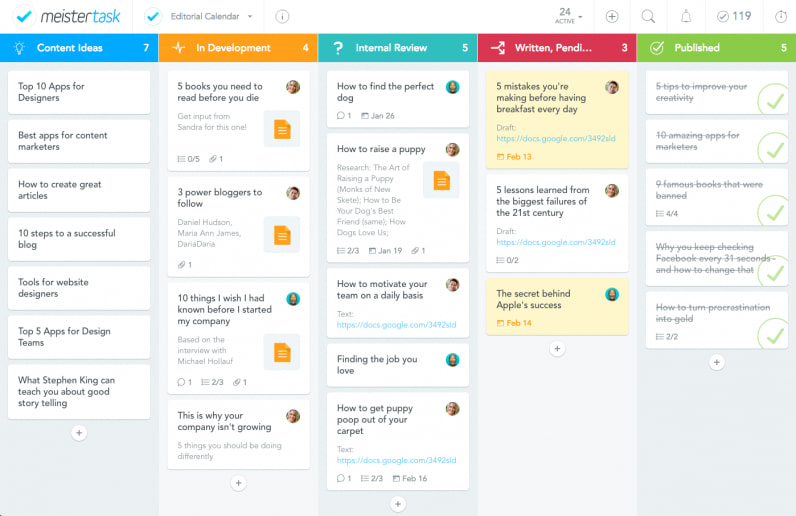Content marketing is the best thing that you can do for your business. As much as 70% of businesses invested in content marketing in 2020 and it will continue to grow this year. If you look closely, the internet is ruled by content: Text, images, photos, videos, podcasts, infographics, eBooks, PDFs, charts, and everything else that you read or see online is content.
Marketing your content and putting it in front of the right eyeballs at the right place is all that content marketing is all about. However, 63% of businesses don’t have a documented content marketing strategy and that’s where it turns out to be a challenge.
You need to make sure that you aren’t one of these businesses that are doing content marketing without a strategy and a plan.
You need a robust strategy to do content marketing. Content strategy refers to the management of all types of content that you own. It helps you manage content publication, distribution, and promotion. Your strategy guides your content marketing efforts.
This actionable guide will show you how to do content marketing and stand out from the crowd. The step-by-step guide below will help you craft a complete content marketing strategy for your business:
Step #1: Define Goals
Ask yourself what you want to achieve with content marketing? The answer to this question is your marketing goal.
For example, if you want to generate leads for your business via content marketing, your goal is lead generation. If you want to increase revenue with the help of content, your goal is to increase revenue. And so on.
You need to refine your goal to make it understandable. The best approach to creating goals is SMART that stands for Specific, Measurable, Achievable, Relevant, and Time-bound:
Here is how to make your goal SMART:
Lead generation: Increase lead generation from content marketing by 25% in 12 months.
Increase in revenue: Double revenue in a year by content marketing.
You just have to make sure your goal is specific, measurable, achievable, relevant, and time-bound. Fulfill the requirements of the SMART goal, and you’ll be all set.
If you have lots of content published already, creating specific goals might get challenging. You’ll have to do a content audit to channelize your content marketing efforts. Content audit helps you analyze existing content that your business owns, its performance, what can be improved, and where you want to go from here.
If you have existing content, start with auditing. Identify the content type that works best for your business and set appropriate goals accordingly.
Step #2: Understand Your Target Audience
You already know your audience and their content needs. If you have buyer personas, you’ll know your audience even better. If you have been doing business for a good time, you can skip this step as you’ll have enough data and knowledge about your audience.
You need to understand your audience based on the content goals. For example, if you are planning to focus on video marketing for the first time, you need to ensure that your audience likes videos.
Or, if you want to generate leads with content marketing, you need to have a clear understanding of what type of content your target audience loves interacting with so that you can create appropriate lead magnets for lead generation.
The simple way to understand your audience is by collecting data. Spend money on market research, conduct surveys, focus groups, structured and unstructured customer interviews, and more.
Step #3: Create and Publish
Content creation and publishing are the two main pillars of content marketing. Once you know your audience preferences, you are all set to create, publish, and distribute content according to your goals.
You need to develop an editorial calendar that helps you create and schedule content and helps in tracking content. Here is how an editorial calendar looks like:

You don’t necessarily have to use a tool, rather you can create your calendar in Excel, Trello, Google Calendar, or any project management app that you are already using.
Here is what your editorial calendar must have:
- Content idea and title
- Content type and purpose
- Due date and publish date
- Who will write it
- Design and creatives
- Who will review and edit it
- Who will publish it?
If you have a large team, it will be best to use a project management tool as it makes communication easier.
Step #4: Promote Content
Writing content and publishing it isn’t enough, it needs to be promoted. Whether it is published on or off your website, you must market it.
Buffer has a nice list of content promotion ideas that covers all the promotion techniques that you can use to promote newly published content:
The best promotion technique is content repurposing. It works great as it helps you connect with a different audience at a different channel using the same content. For example, you can convert a video into PPT and reach your target audience on SlideShare.
The best part: It works for all content types across all channels.
Step #5: Track and Optimize
When you are producing different content types to meet your content marketing goals, it is essential to track the performance of each content piece individually. You can use Campaign URL Builder by Google that is the easiest and free way to create UTM codes:
This lets you track content individually in Google Analytics. It simplifies tracking and you can identify best-performing content. The idea is to identify content that works best for your audience and optimize your content for conversions and engagement.
Get Started with Content Marketing
Doing content marketing is a simple 5-step process that you can do without any training. Setting appropriate goals and using the right tools to create, publish, promote, and analyze content is all you need to be on the top of your content marketing game.
Yes, you need to create awesome content that is helpful and interesting. Creating content for the sake of content doesn’t work. Without quality content, content marketing will fail to deliver results.
Focus on quality content and nothing else.
Featured Image: Unsplash






